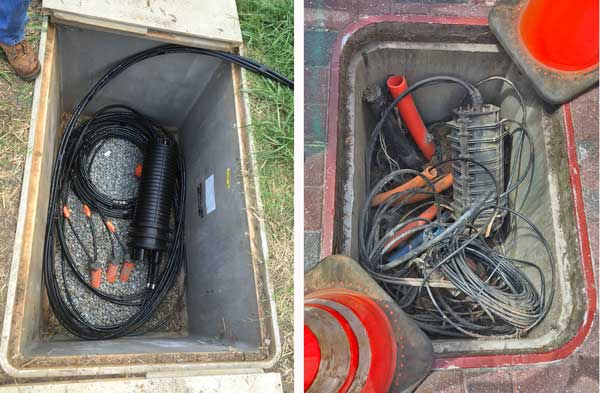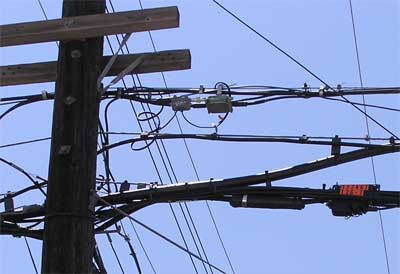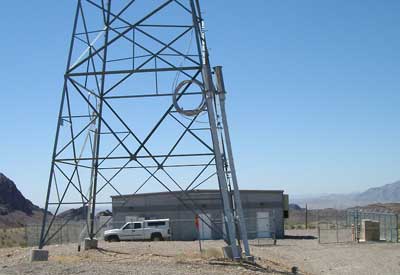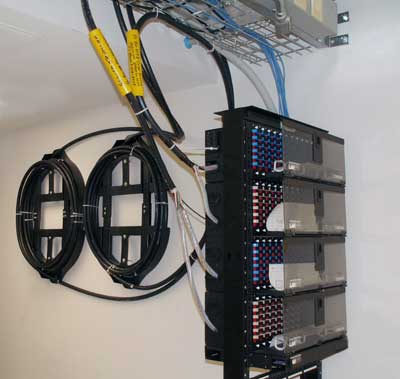The Fiber Optic Cable Plant
The
FOA generally focuses on the fiber optic cable
plant.
What is a "fiber optic cable plant"? It's a term we
use all the time in fiber optics to cover the
installed fiber optics that
transmits communications signals. It's permanently
installed between the two points which you require
communications between. It's what you connect your
communications electronics to with patchcords on
each end.
The cable plant includes all the fiber optic cable
between those two points. That cable may be buried
underground or installed aerially on utility poles.
It may even have segments that run under water -
streams, rivers, lakes or oceans. Cables come in a
maximum length of about 5km on a spool from the
factory, so longer lengths will require splicing
cables together. Splicing is also required if points
along the route require connections (drops) as well
as from end to end. At the ends, the cable plant
will be terminated in connectors to allow making
connections that can be changed as needed. Hardware
is required for every splice and termination to
protect the cable plant and the joints between
cables. These may require underground storage in
manholes or above ground storage in pedestals.
Indoors they are in racks or enclosures that hold
and protect patch panels for interconnections.
Fiber optic cable may be installed indoors or
outdoors using several different installation
processes. Outdoor cable may be direct buried,
pulled or blown into conduit or innerduct, or
installed aerially between poles. Indoor cables can be
installed in raceways, cable trays above ceilings or
under floors, placed in hangers, pulled into conduit
or innerduct or blown though special ducts with
compressed gas. The installation process will depend
on the nature of the installation and the type of
cable being used.
Here
are examples of fiber optic cable plants.

Underground cables may installed in conduit or ducts
or, if the cable is armored, directly buried
underground. Cables are spliced in manholes or
handholes (smaller than manholes) and may be new and
neat as on the left or older and crowded from the
addition of many cables over the years.

Aerial fiber optic cable often shars poles with
telecom wire and CATV coax, but is usually marked with
orange fiber labels. Low voltage cables are mounted on
poles in the "telecom space," well below power cables.

Optical power ground wire (OPGW) is an electrical
power ground with fiber optics in the center of the
conductor. The coil on the tower is where fibers are
spliced and the building houses communication
equipment.

Premises cable plant with connection racks and storage
loops
More
on Outside Plant Construction and Installation
|

